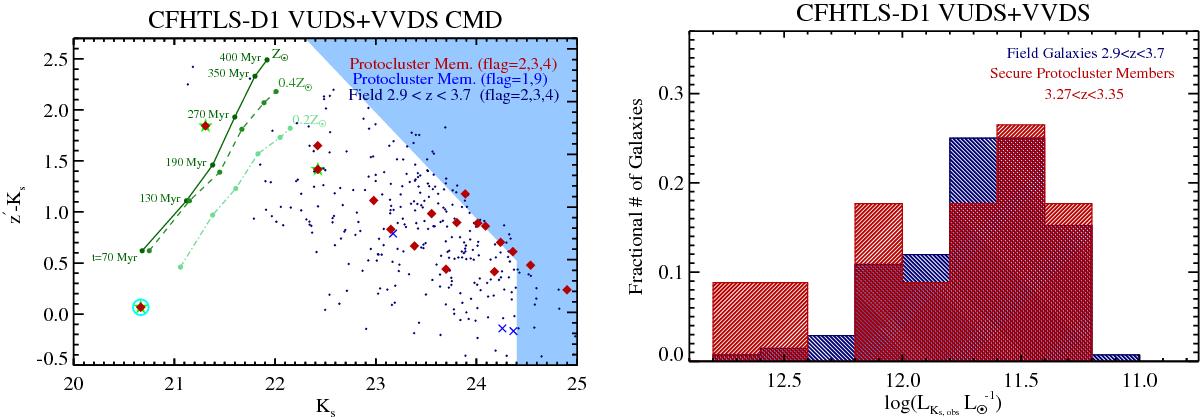Fig. 9

Left: observed-frame CFHTLS/WIRDS color−magnitude diagram (CMD). Members of Cl J0227-0421 with secure spectroscopic redshifts are shown as red diamonds, those with less secure spectroscopic redshifts are shown as blue Xs. The meanings of the green star and cyan circle are the same as those in Fig. 3. All galaxies in the entire CFHTLS-D1 field with secure spectroscopic redshifts 2.9 <zspec< 3.7 that do not reside in the bounds of Cl J0227-0421 (i.e., “field galaxies”, see Sect. 4.1) are plotted as small navy points. The light blue-shaded region indicates the region of this phase space not probed to the 5σ point-source completeness limits of the CFHTLS/WIRDS imaging. Model tracks for a z = 3.3L∗ galaxy with three different stellar metallicities are overplotted (see Sect. 4.1.2). Several galaxies which are extremely bright in the Ks band, including two of the four brightest galaxies in the entire spectroscopic sample over this redshift range, are members of the protocluster. Right: fractional distribution of observed-frame Ks-band luminosities in the protocluster and field samples. Only those protocluster members with secure spectroscopic redshifts and only those galaxies lying outside of the blue shaded region in the left panel are plotted. Though a large fraction of the protocluster member galaxies have relatively normal Ks-band luminosities with respect to the general field population, the percentage of bright (log (LKs)~>12.0) galaxies residing in Cl J0227-0421 is nearly double that of the field.
Current usage metrics show cumulative count of Article Views (full-text article views including HTML views, PDF and ePub downloads, according to the available data) and Abstracts Views on Vision4Press platform.
Data correspond to usage on the plateform after 2015. The current usage metrics is available 48-96 hours after online publication and is updated daily on week days.
Initial download of the metrics may take a while.




